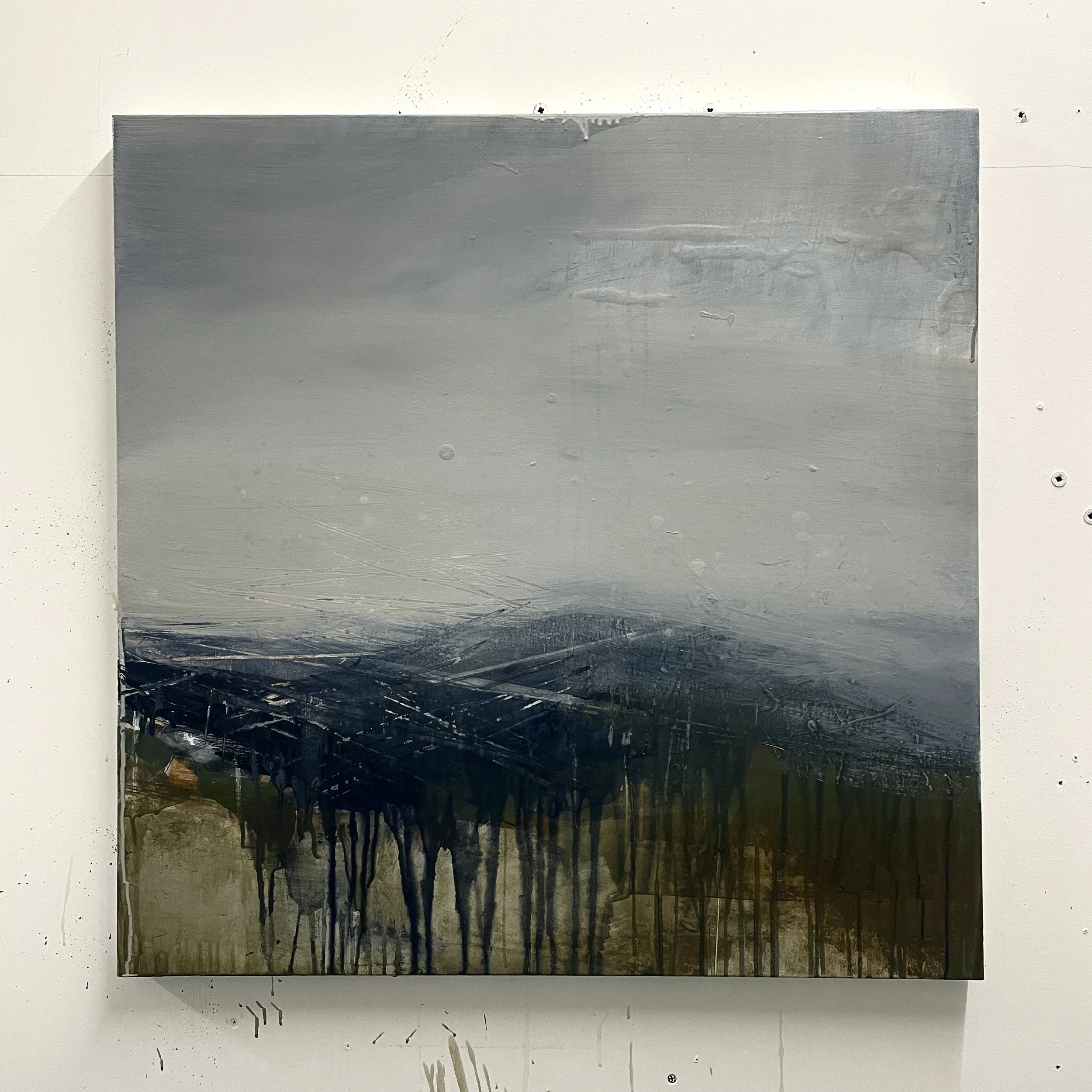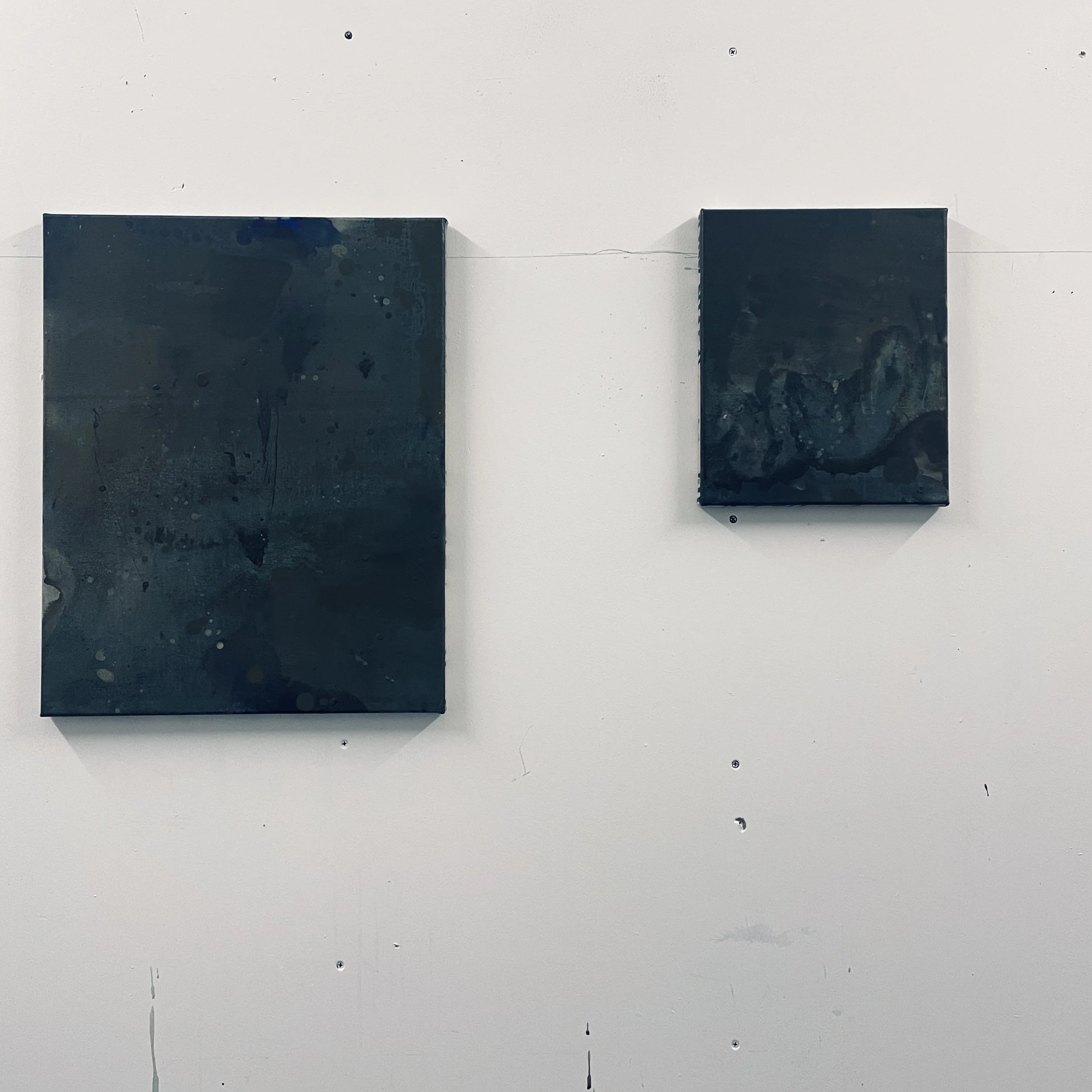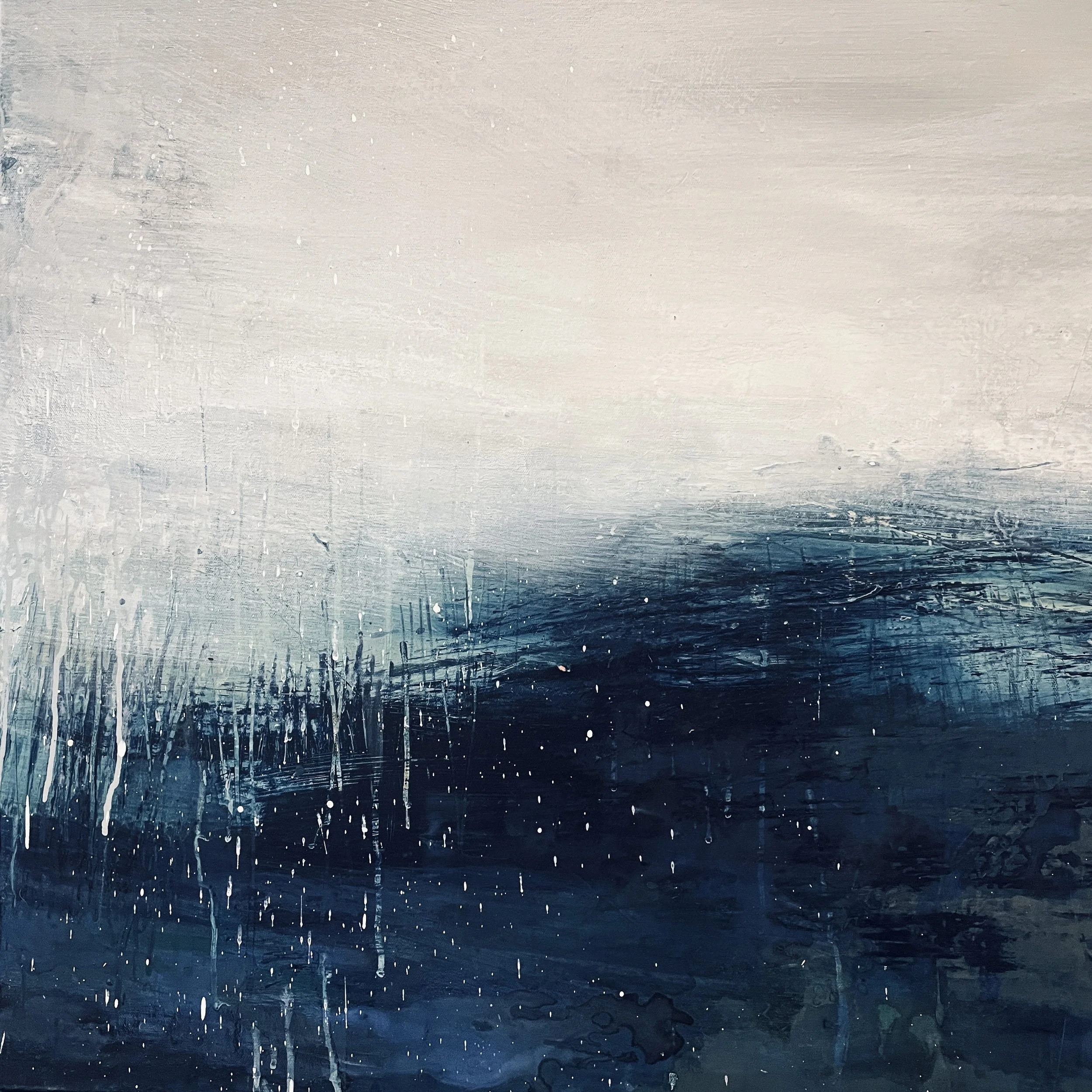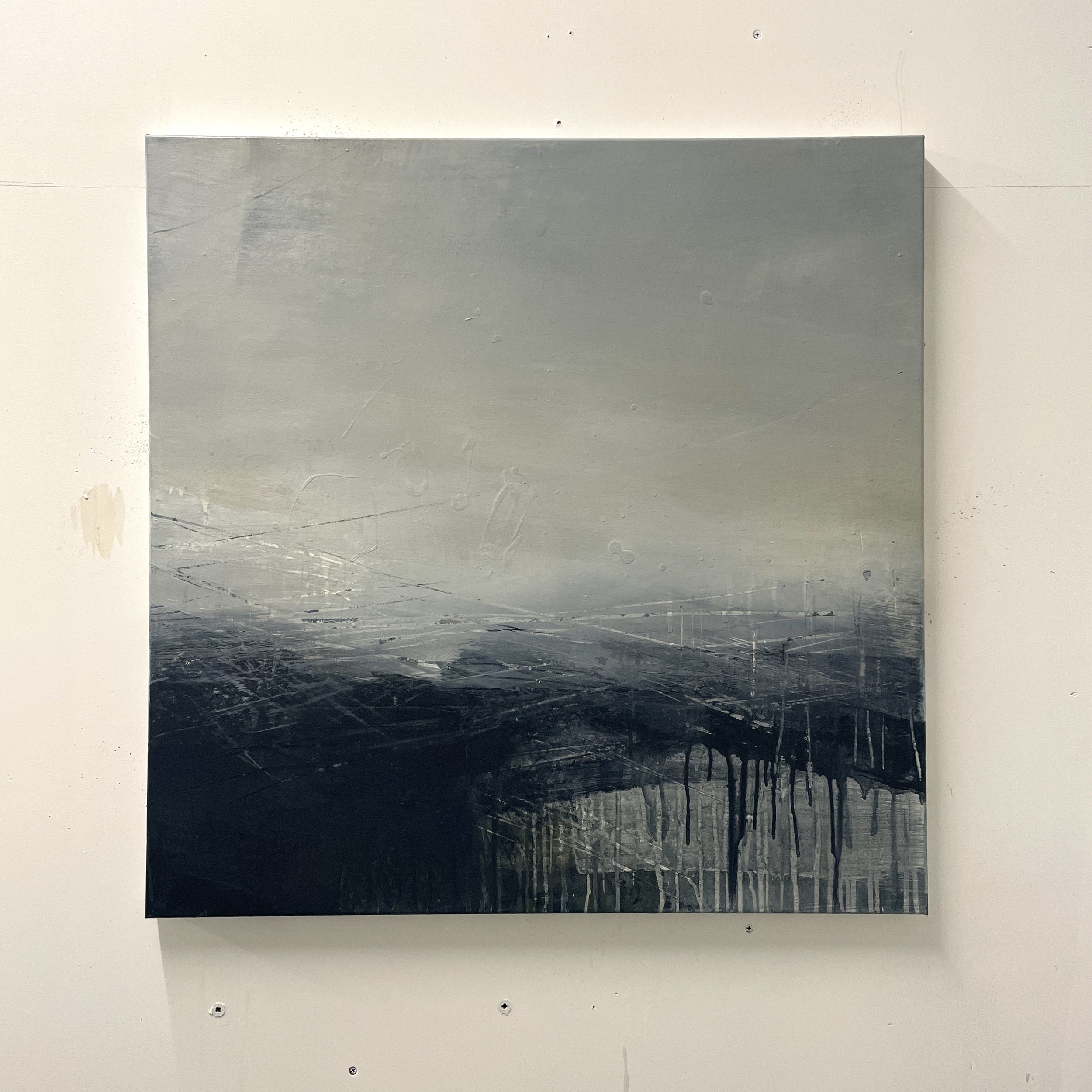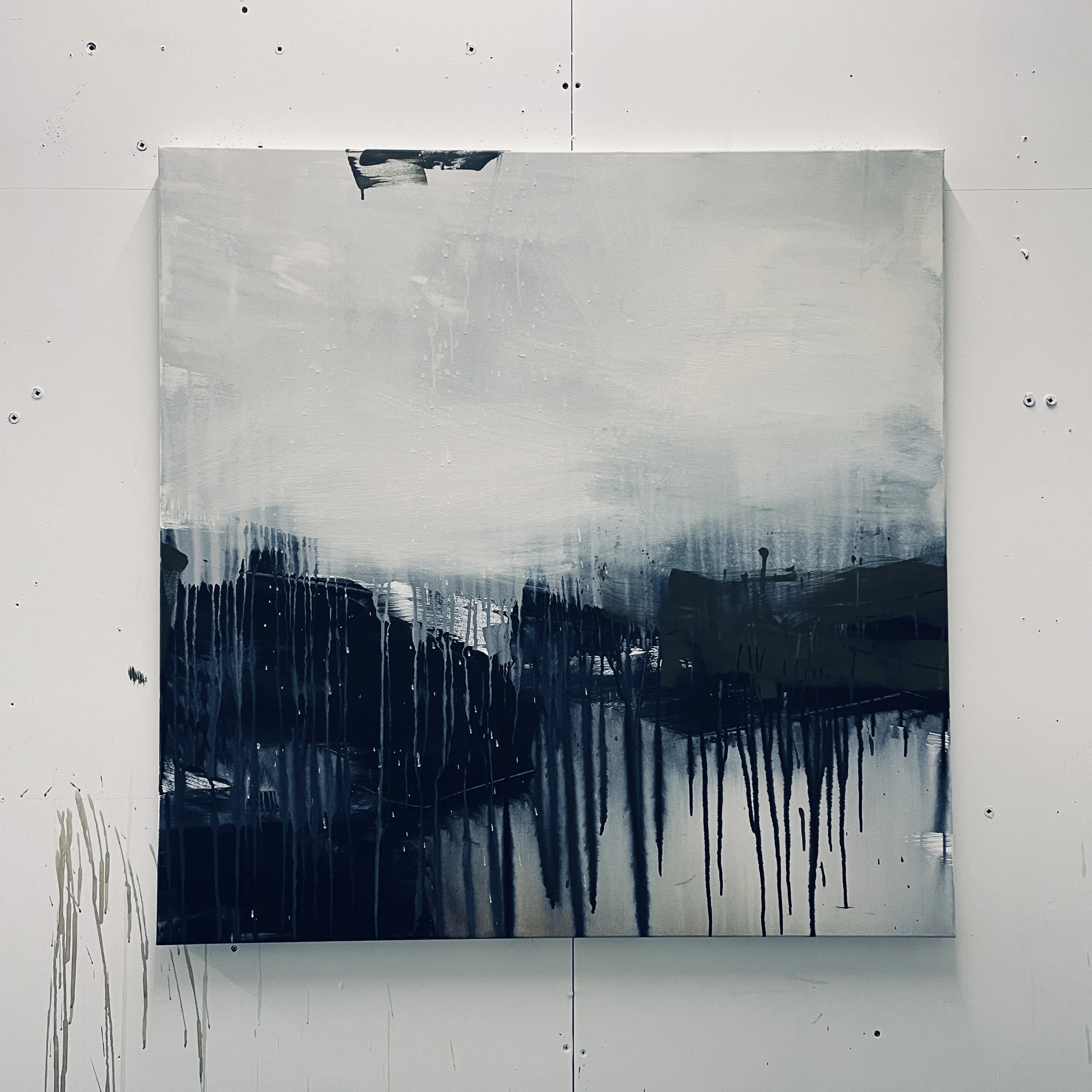Week Twelve | An Archive of Loss
I have continued with last week’s tasks of exploring ruination in painting and erasure in my drawings. Painting seems to have taken over just when the trace narratives need to get underway - time is ticking…
Since the start of the MA I have been seeking strategies for discernment: ways to remain open minded and open hearted but also hone my ability to make a blunt cut. I am focussing increasingly on landscapes of the past, present and future and with that the anticipatory grief around climate change. However the moment I create some intellectual space around where I choose to progress my ideas, I feel drawn in other directions. Perhaps it is a discipline to which I am not yet accustomed, or I might perhaps have to accept that the creative cycle is like walking an unruly puppy with sudden jolts in strange directions and distraction being the focus rather than focus being the focus.
Belonging and Loss - an inventory. Sehnsucht in almost everything I do and think. Be/longing.
Some time ago I gathered a small shrine of objects associated with my own grief and the grief around me. I have noticed that grief is accumulative and is like a cuckoo - happy to nestle up to someone else’s for company. I keep these objects around hoping they will speak to me in some way, like a clairvoyant looking for answers from beyond the grave. Maudlin stuff. The objects remain however and I am revisiting them. How sad that the physical remains of my mother are a fountain pen anda cushion she made for me when I was a baby.
I also wonder whether there is space for hope in my inventory of sad things. Gold features often in my work and I have a painting of a Kintsugi bowl in my kitchen that I look at hundreds of times a day. I wonder if my paintings might be a sort of Kintsugi for the planet. Beauty and healing in a seemingly hopeless collection of circumstances. My mother’s fountain pen and use of Quink ink has been something I have revisited several times, making paintings with Quink, watching it fade and loving the blue.
I am finding this exercise difficult and there are lots of gaps I am filling in in dribs and drabs. Gaps, gaps.
Painting
My studio work seems to have evolved into paintings that speak of an atmosphere of grief. I am continuing with this work and I am enjoying the balance between these paintings and my more experimental attempts. These pieces are moving forward with some resolving well and going to a gallery. The ruination textures are becoming more apparent in these larger canvases and I am enjoying exploring different types of ruination and grief and placing the canvases next to one another to see how the perspectives might change. For example some canvases speak very much of place and others are a bit less specific, such as the very dark canvases. I like how these works are moving away from such a literal description of place but rather focussing on a sense or memory of place.
I have re-read the three essays titled An Atmosphere of Grief by Ivor Williams (link to Part 3). This particularly stays with me: (the Psychiatrist) “learned that trauma is not just an event that took place sometime in the past; it is also the imprint left by that experience on mind, brain, and body. This imprint has ongoing consequences for how the human organism manages to survive in the present. Trauma results in a fundamental reorganization of the way mind and brain manage perceptions. It changes not only how we think and what we think about, but also our very capacity to think.”
This feels relevant to my traces, as they are directly footprints of the trauma that came so long ago and not only remains but is now embedded within my DNA.
Revisiting ideas of death denial culture that I began to research with the RCA in 2022 as well as a ‘man as separate from nature’ discussion in Williams’s article are important. Death denial and its roots might help unearth why death and trauma are so hard to reconcile, even in the face of such catastrophic, potentially species limiting or even ending disaster.
I wrote a prose poem about my mother’s death in 2022 and haven’t written much poetry since. This feels a useful way to proceed.
I wish I were a Tang Horse
The jar on the window sill carved out in your image. With painted stories that shape the holes you left. Next to it, the profile of a child with a belly full of sad. I sat in the space by the kitchen between the cutlery stand and the door frame, exactly the right size. The shape of you and the size of me: mother and child.
Chocolate brown walls and the government issue beige corduroy couch. Your feet up on that large square table with the game of solitaire: 32 marbles and 33 holes. Right in the middle, the space not occupied. I watched on from the space I occupied. Hanging above the wrought iron Indonesian lamp that swung and creaked during typhoon Ellen. I saw you watch those 80s dancers with their pastel leg warmers and how happy you looked. We had to be quiet, this was your time.
The blue and white vases in the lounge, painted with dots and chickens, from the lanes near where you worked in Central. Blue irises and blue and white wedding China carefully stacked like our apartment in a tall building on Po Shan Road. A miscellany of pottered patterns, a pentimento of painted agony. Your blue pen and your lovely writing, short hand and long; remote and long gone but still here somewhere. Washable Parker ink, blue stained on your fingers, cold in the emptied air.
You gave me your moles but they wandered disobedient, not nicely placed like a trilogy on your discerning, gweipor face but inconsequential and ordinary: just a shoulder, the side of my leg. Yours were rare and special, mine are just moles. The dots I bear form an unlikely companionship with the cantata of your withdrawal - melanocytes and Jesu Joy of Man’s Desiring.
I wish I were a Tang horse: I could climb inside your image and be part of you again in a juncture of circular time. The perpetual stillness, preserved and knowable, rearing up and yet caught in a lie of time. I wonder about that November and how it came to be. How we flew over Bahrain, how we had to land. You were so ill, we were so afraid. And later you died.
Red painted toenails and a champagne satin pantsuit, big hair and your three moles in that one blurry photo. The hot and cold taps swirling below, your hair leaning over me like a waterfall of cells, our shared DNA in a cascade of white noise. I remember your white hooded dressing gown, the clatter of a typewriter. Working but kind. So little remains of so much. At least I have you in our ginger jars.




